George Floyd, Breonna Taylor and how police began treating America like a war zone
On the streets of the US, protesters are facing the same brutality from law enforcement that they’re demonstrating against, writes Holly Baxter

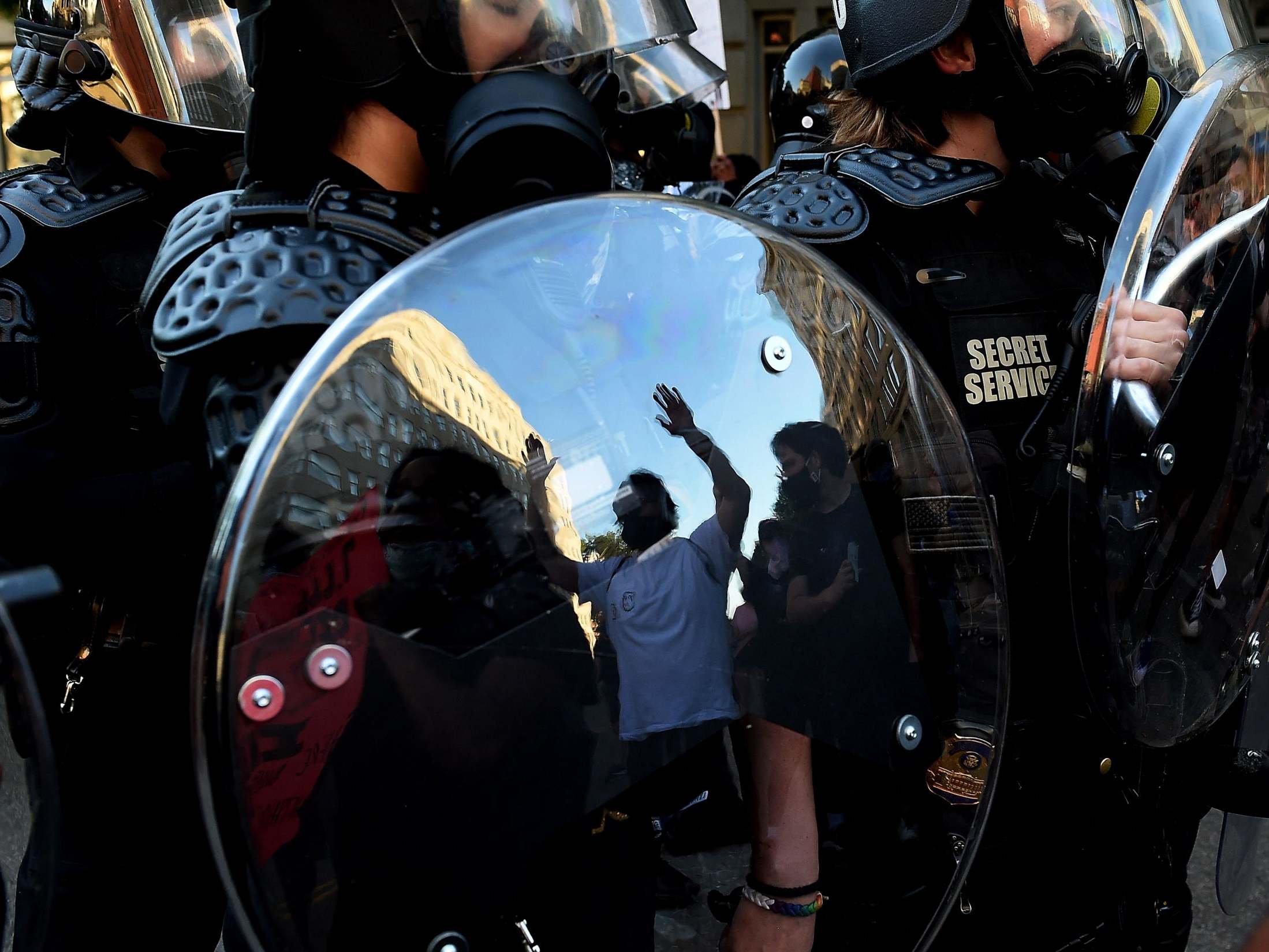
As protests raged across the nation in support of Black Lives Matter, an asthmatic man was pepper-sprayed in his prison cell in Brooklyn. Thirty-five-year-old Jamel Floyd, who was, according to relatives, due to be released in just over three months, had reportedly become “disruptive” in his cell on Wednesday. Officers who were apparently worried he would “cause harm to himself or others” entered the cell with pepper spray and removed him. From there, the details are somewhat unclear. What we do know is that Jamel Floyd was dead just an hour later. Pepper spray, an inflammatory agent, is known to aggravate severe asthma.
Jamel shared a surname with a man who died with a police officer’s knee on his neck. In Minneapolis, Minnesota, George Floyd gasped, “I can’t breathe,” as Derek Chauvin kept him pressed to the ground for eight minutes and 46 seconds. Even after paramedics arrived to attend to Floyd, Chauvin was reluctant to move his knee – in fact, he didn’t for, at best estimates, a full minute after Floyd lost consciousness. But you know that. You’ve heard it in the anguished words of the protesters who started expressing their grief and anger in Minnesota, then across the United States, then across the world. Though you may not know that Floyd was a 6ft 6in “gentle giant”, or a father to a six-year-old daughter named Gianna, or an “always cheerful” bouncer who enjoyed dancing badly to make people laugh, you know he died on the street last week, another victim.
Since those protests went mainstream – since they even started popping up outside my Brooklyn apartment, on a street the NYPD then built barricades around – so too has police brutality. Social media is suddenly filled with photographs and videos of peaceful protesters, including journalists, being shot at with rubber bullets, teargassed, jumped on and beaten with batons. These are the sorts of scenes that reporters are used to in war zones rather than the residential streets of a supposedly civilised country in peacetime. And it turns out there’s a reason for that.
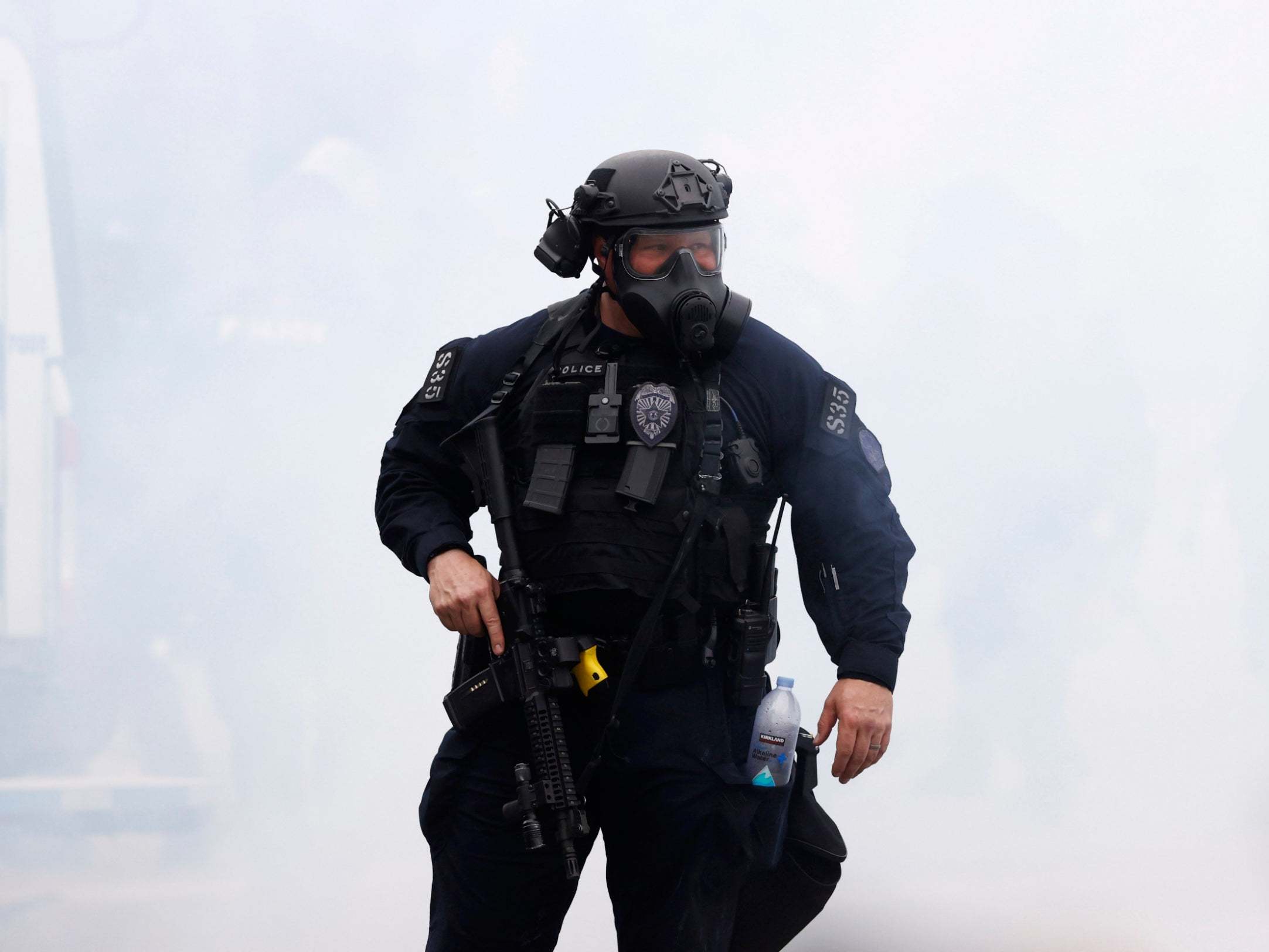
In 2011, a decade after George W Bush declared his ill-fated “war on terror”, a former Washington State police officer called Arthur Rizer and a lawyer called Joseph Hartman wrote an article in The Atlantic which described the worrying “militarisation” of the US police force. Since the Iraq and Afghanistan invasions, they wrote, huge amounts of spare military-grade equipment has been made available to police departments across the US.
Not only that, but counterterrorism – something previously seen as the remit of local police forces, to be handled in the same “protect and serve” manner that they were supposed to handle traffic violations, property damage, burglaries and so on – became “a job for a soldier”. Local police were offered training by the military and were given access to their very own Swat teams. “When police officers are dressed like soldiers, armed like soldiers and trained like soldiers, it’s not surprising that they are beginning to act like soldiers,” Rizer and Hartman wrote. “And remember: a soldier’s main objective is to kill the enemy.”
Why would the US army want to share its equipment with police forces in the first place? Quite simply because they had too much of it. During the 1990s and beyond, when America was racking up quite a few overseas misadventures, the department of defence was left with so much equipment it quite literally did not know what to do with it. Faced with a stockpile that would otherwise have to be destroyed, the government made a deal with local police forces, allowing them to acquire that equipment on the cheap. When he came to power, Barack Obama moved to ban the transfer of some of this equipment from the army to the police – but that decision was reversed after Donald Trump became president.
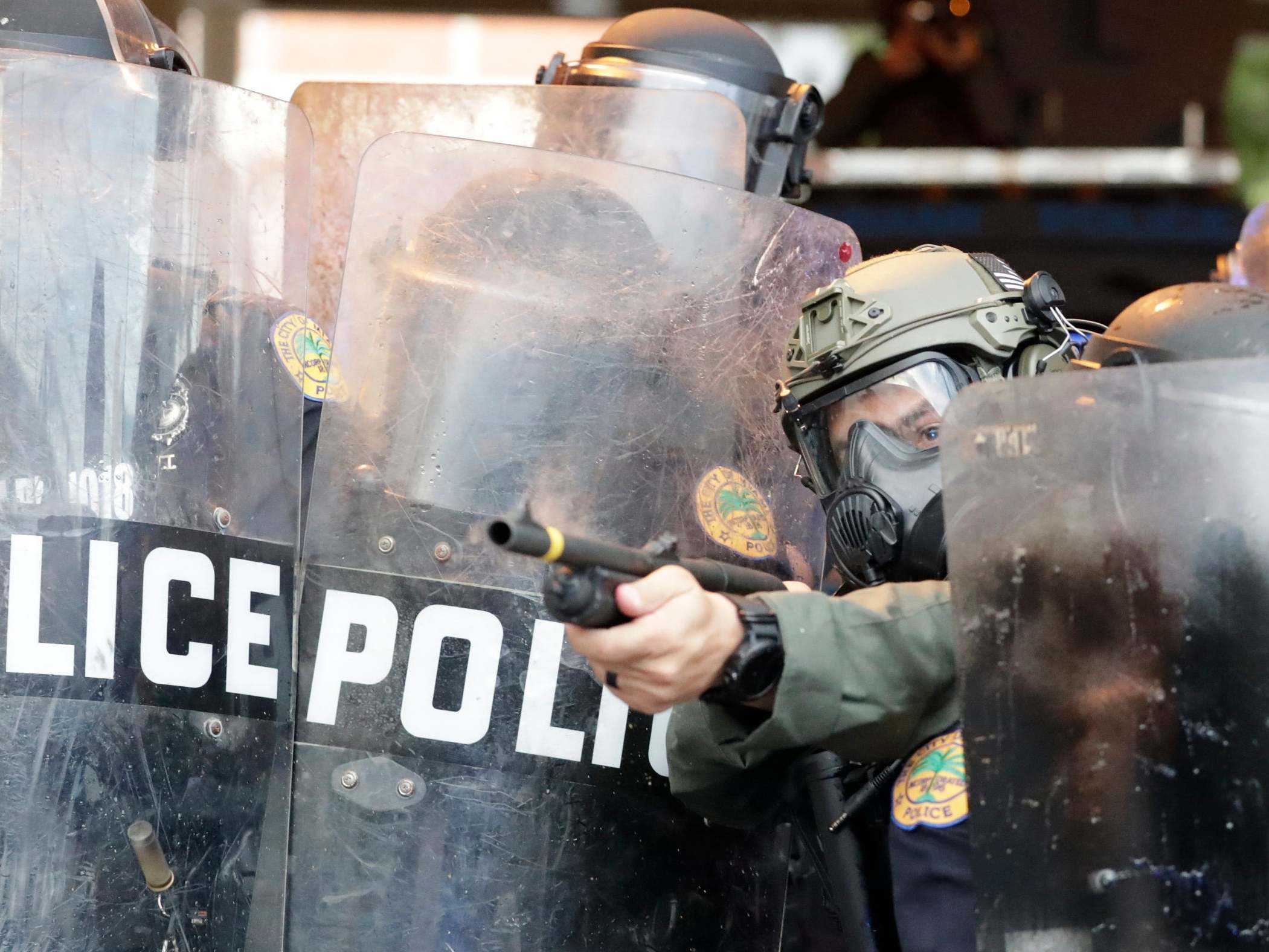
With a stockpile of military weaponry comes a shift in psychology. Tactics that previously would have been reserved for “enemy combatants” on the battlefield were soon routinely deployed by police across the country, even in small towns where serious crime is vanishingly rare. Indeed, we can draw a direct line from the militarisation of the US police to the death of 26-year-old Breonna Taylor in Louisville, Kentucky, in March. Taylor was killed by police who shot her eight times after entering her home just before 1am while she and her boyfriend, Kenneth Walker, were sleeping. As Walker tells it, police burst into their home without announcing themselves; Walker jumped up, grabbed his handgun – which he owned legally and had a licence to carry – and shot at the men, who responded with heavy fire. The Louisville police department claims that officers knocked multiple times and announced themselves before eventually breaking down the door, but that series of events seems suspect when you consider that Walker himself called 911 when they entered, asking for protection from the police from intruders; and the fact that the police had already sought – and been granted – a “no knock” warrant from a judge. No knock warrants allow police to enter a building usually under cover of darkness and use the element of surprise – another tactic that originated in the military.
In a country where the use of handguns is routine and legal, it’s not difficult to imagine how quickly and badly wrong a no knock warrant can go. Was Walker justified to jump out of bed and shoot at perceived intruders? Most second amendment-loving Americans would say yes. With his girlfriend unarmed and sleeping beside him, it’s not difficult to imagine Walker thought he was doing the responsible thing. “I don’t know what is happening,” he can be heard saying on a recording of the 911 call given to the Louisville Courier Journal after the incident. “Somebody kicked in the door and shot my girlfriend.”
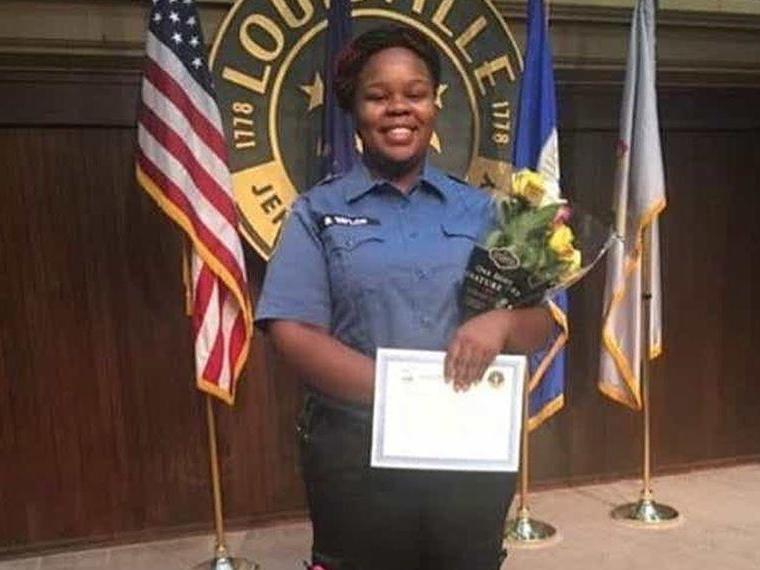
Walker was originally charged with attempted murder of a police officer and aggravated assault for his response to police entering his apartment; his gun injured one officer who went on to make a full recovery, with the bullet hitting the man’s leg. The charges against Walker were later dropped after an outcry. Neither Taylor nor Walker had a criminal record, and the drugs police suspected were in their house never turned up – like George Floyd, the cases against them were minor and spurious. And although a no knock warrant was granted by a judge, more than one person has pointed out that they were not supposed to exist in the first place: the fourth amendment, as interpreted in one pivotal Supreme Court case, protects American citizens from such treatment and demands that police officers always announce themselves before making an arrest or entering a building. Using a no knock policy to descend on civilians has no justification – so why do local and state judges keep granting them? The answer, again, is simple: the lines between policing and military rule have been blurred. Anything goes if we’re at war.
Last week, after covering some of the protests in Minnesota for the Los Angeles Times, reporter Molly Hennessy-Fiske wrote: “I’ve covered protests involving police in Ferguson, Mo, Baton Rouge, La, Dallas and Los Angeles. I’ve also covered the US military in war zones, including Iraq and Afghanistan. I have never been fired at by police until tonight.” Just one day earlier, a CNN crew headed by broadcast reporter Omar Jimenez was approached by police in military-grade riot gear, arrested and held for an hour before being released, despite identifying themselves repeatedly as press. Linda Tirado, a freelance photographer, lost her left eye after being shot at with pepper balls by police officers in Minneapolis. And in Louisville, Wave3 broadcast news reporter Kaitlin Rust was recording a piece to camera on a quiet street populated mainly by police officers when she began crying out: “I’ve been shot! I’ve been shot!” and her cameraman panned to show a police officer taking aim directly at the news crew and opening fire with a gun that shoots either pepper balls or rubber bullets (the police force says it was pepper balls). Usually, a press card can get you out of a lot of tricky situations – even in a war. But this is a new kind of war, and the actions of its footsoldiers are already causing national and international divisions. The American Civil Liberties Union has opened a lawsuit against the state of Minnesota for “unconstitutional conduct targeting journalists” during the George Floyd protests; and the government of Australia has promised to investigate after a number of Australian reporters were hit and their equipment punched as they attempted to film an uprising in Washington DC.
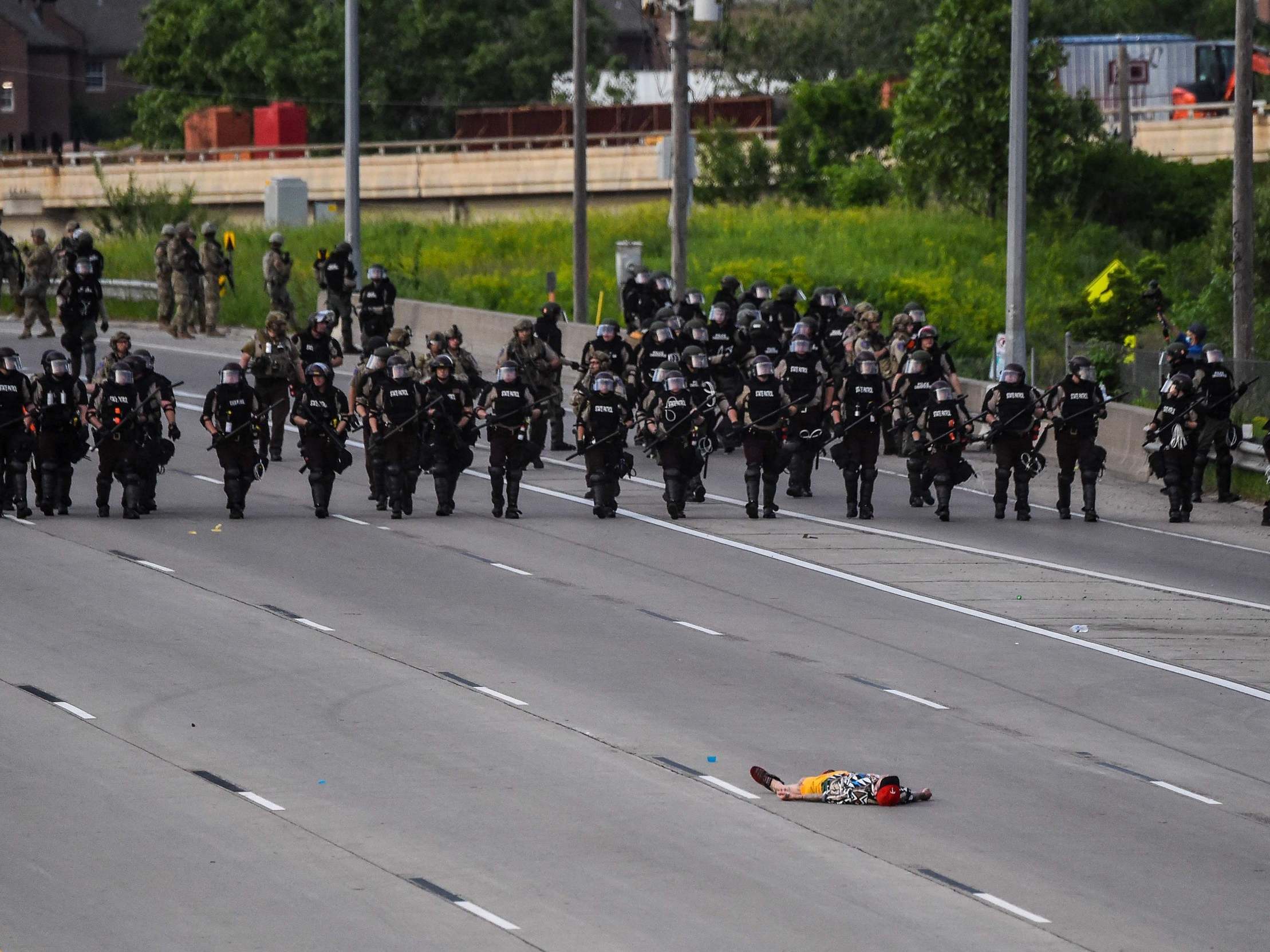
What should be clear from this country-wide spread of police violence is that this problem is systemic, not a case of a few isolated incidents. Donald Trump vowed to declare Antifa a terrorist organisation this week and raised the stakes on what could be done to keep down protesters who look like they might sympathise with the group. In a strange non-sequitur in the Rose Garden of the White House, he talked about protecting “your second amendment rights” while addressing the protest, stating in full: “I am mobilising all available federal resources – civilian and military – to stop the rioting and looting, to end the destruction and arson, and to protect the rights of law-abiding Americans, including your second amendment rights.” It sounded like a dog-whistle incitement to his gun-toting base, the same ones who turned up to the Michigan state house in April clutching AK-47s in order to demand the end of the coronavirus lockdown.

Those white protesters, many of whom wore red “Make America Great Again” caps, shouted in the face of police officers who stood in their way when they entered. But they faced no police violence, no brutality or unfair arrests. They were simply allowed to state their case and move on, assault rifles strapped to their chests. Are they who the president envisions as his personal army? Was he implying that during the unrest surrounding the deaths of George Floyd and Breonna Taylor, his base might go to war for him against the enemy insurgents?
When I spoke to Andrew Buncombe, The Independent’s chief US correspondent and a Briton who has lived in America for more than two decades, on his recent return from Minneapolis, he told me, “I’ve been teargassed before, but never in the United States.” He described disproportionate police violence against protesters – especially black protesters – for the crime of “breaking curfew”. He was shocked by the nonchalance of police happy to use serious weapons against civilians, he said; but nothing shocked him more than what Trump said and did in DC. The president’s now-infamous stroll to a pentecostal church not far from the White House – and the protesters who were violently cleared from the area so he could hold up a bible and do a photo op – felt like a turning point. Trump, it seemed, was finally admitting that he had never intended to be president of the American people. He is president of the people who support him, and anyone else is collateral damage in the new war against rioters, looters, peaceful protesters, socialists, Antifa and anyone in between.
On social media a few nights ago, I saw a video of a black teenage girl one street away from my apartment being thrown across the street by a police officer so hard that her head hit the pavement with force and she was knocked unconscious. One of her friends said on Twitter that the girl – who looked like she weighed little more than 100lb, and was pushed by a man in heavy military-grade gear – later had a seizure. I walked down to the protests at the Barclays Centre nearby and watched police with stacks of plastic handcuffs attached to their uniforms fill buses with mainly peaceful protesters. Most of what I saw was peaceful, from both sides, but the atmosphere was tense; on the top of the subway station, an armed policeman in a bulletproof vest and a helmet trained what looked to be a rubber-bullet gun on those below. I stood for a while and spoke to a man who had set up an impromptu stall offering free water (for teargas), plastic gloves (to throw gas canisters out of range), face masks (to protect against coronavirus) and goggles (a good solution, again, to teargas, but also a smart choice for those who don’t want to lose an eye to rubber bullets or pepper balls).

Since the protests began, I have received a number of messages from people who claim to have been subjected to police brutality. One who gave his permission for his full name to be used was Todd Gallinger, an attorney and nonprofit advocate in Long Beach, California. He said that he attended the protests because he didn’t know “a single black person in my life who hasn’t been a victim of police brutality at some point”, including his wife, who is black, and her three teenage children. “Rubber bullet in Long Beach on Sunday night,” Gallinger wrote to me, with an accompanying picture of a large, red wound on his chest. “We had our hands raised, on our knees chanting ‘Don’t shoot’ and Long Beach PD fired rubber bullets and teargas. A local reporter … was also hit in the neck at the same time.” That reporter, Adolfo Guzman-Lopez, posted pictures of his own, similar injuries and said he had been wrapping up an interview with a protester when he was shot. “I talked to him for about a minute and just as I was finishing talking to him – right after I said, ‘Thank you’, I heard a pop and I felt something, you know, the bottom of my throat and I saw something bounced onto the ground, and then I ran,” he told local news station KPCC.
Another protester who only wanted their first name to be used called me on Thursday night, after I’d returned from a post-curfew protest in New York where the attendees held signs above their heads stating “My humanity should not be up for debate” and wore goggles and helmets. Nathaniel, a 30-year-old social worker who identifies as genderqueer and uses they/them pronouns, described being at a peaceful protest in Seattle where “families and children were in full view” when all of a sudden, there were “five or six flash-bang explosions all at once and teargas from police”. As the smoke cleared, Nathaniel told me, they found a 17-year-old child who was “bleeding, with their thumb partially hanging off and punctures to the bone all the way down their index finger”: “I tried to do some first aid, to put pressure on and stop the bleeding. They weren’t letting any medics in. I eventually found a nurse in the crowd, and we were able to get into an SUV with two people who took us down to the emergency room.” Nathaniel described their shock at seeing “children being maced” and “young black high school students peacefully expressing themselves” being targeted with what looked like rubber bullets. “A person in front of me went down when they were shooting indiscriminately,” they said. “You couldn’t even see the police through the teargas. They couldn’t see us. They were just shooting into the crowd.”
Nathaniel’s voice shook with emotion as they described lines of police officers “with face shields on and gas masks” who refused to help a woman when she collapsed and had a seizure: “She was foaming at the mouth … There was no action from officers. We were begging for help, we were begging. We had to carry her away.” And as they left the protest, Nathaniel described watching a group of teenagers on the front lines of the protest, standing directly in front of the cops in their gas masks and their armour: “It’s so sad because these kids are not wearing gas masks. They’re not there to be in battle. They’re there to stand up for what they believe in.”
“My name is Natalie. I am a trans woman in San Diego. I was providing first aid at the protests in La Mesa, a suburb of San Diego,” another protester wrote to me by email. “Besides being teargassed about 10 times (two of which I would consider to be severe), I was also shot in the torso with a rubber bullet from a moving cop car. I was standing on the other side of the street from the protesters trying to recollect myself. I had nothing in my hands, I was just standing there.” Natalie added that those around her had been injured as well: “I also provided first aid for a queer black man who was shot in the back of the head with a rubber bullet, leaving a gash on his scalp.” Police blocking ambulances from coming into protest areas was a common theme in the stories people told me: Todd Gallinger said that he saw multiple people who had been teargassed and were in clear distress being left on the ground by police, and that he “passed by a man passed out in the street [and] two others with him said they had been waiting 40 minutes for a 911 response, but it hadn’t come.”
Many journalists have expressed concern about Trump bringing in the actual military – rather than the police in military combat gear – to quell protests, but perhaps the most damning indictment of the US police force is that almost everyone I’ve spoken to on the ground about the issue thinks their presence could de-escalate the situation. The military are much more highly trained than local law enforcement, and they’re also more likely to have seen the effects of their weapons on colleagues and friends. The weapons they carry feel normal, not novel, they are less jumpy and less likely to be fazed by civilian unrest. The problem is that in America, police have ceased to be police – but they are not members of the army either. Instead, they inhabit the uncanny valley between policing and military, between small-town keepers of the peace and battle-weary soldiers. That’s a big valley, and a dangerous place to be, not least for those looking down the barrels of pepper-ball guns.
Join our commenting forum
Join thought-provoking conversations, follow other Independent readers and see their replies
Comments